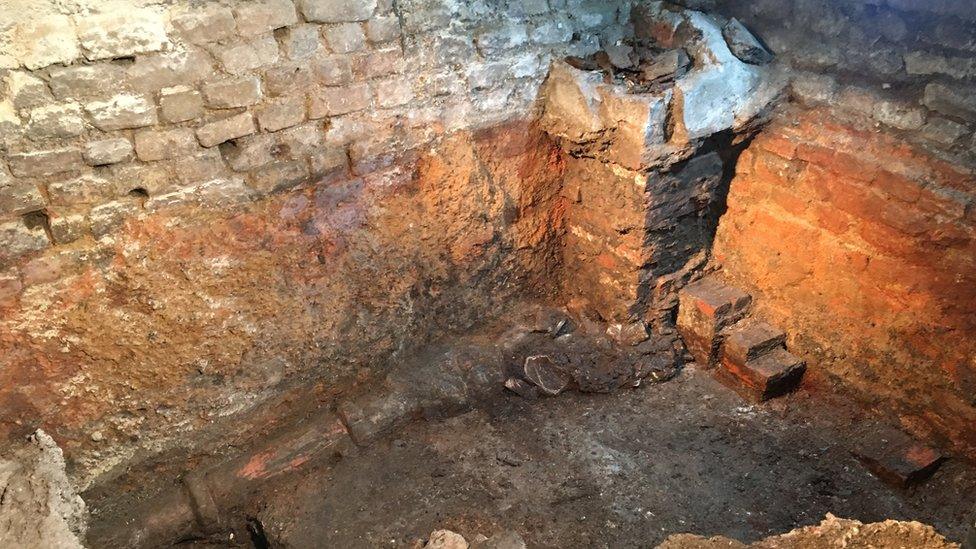Historic England: 10 English archaeological finds of the decade
- Published
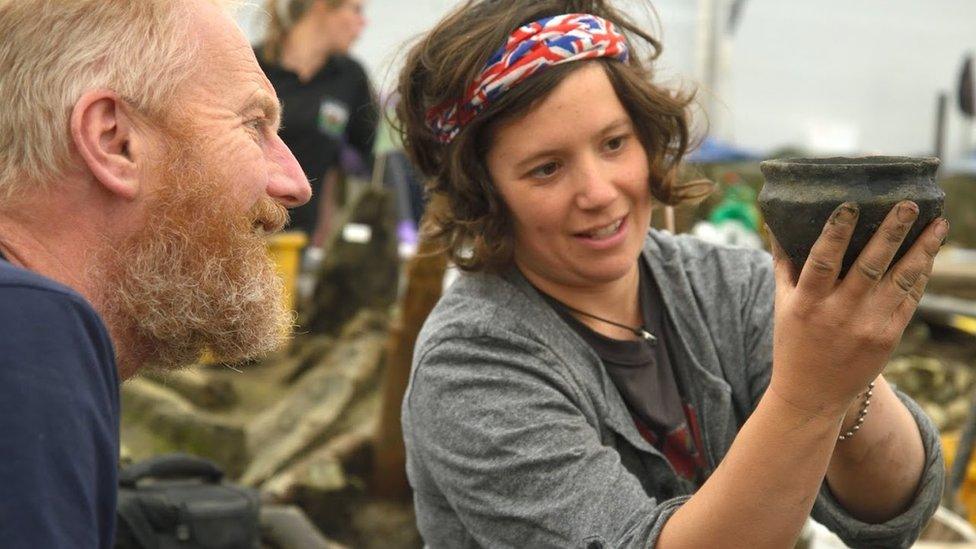
The remains of a Shakespearean theatre, 17th Century shipwreck and bones of Britain's first rabbit have been named among the top 10 archaeological finds of the last decade in England.
Historic England drew up the list to mark the imminent arrival of 2020.
Chief executive Duncan Wilson said: "This has been a truly remarkable decade of landmark archaeological discoveries.
"The past never ceases to amaze us and there is always more to learn."
Must Farm Bronze Age Settlement, Peterborough, Cambridgeshire
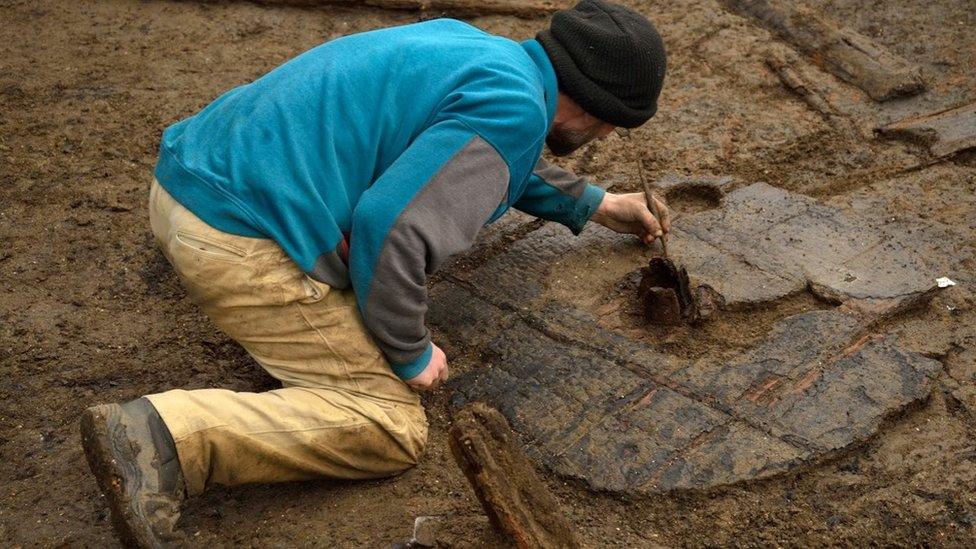
Discoveries at the former settlement include the earliest complete Bronze Age wheel in Britain
Although archaeologists knew there was something important at this site, it was not until 2015 that a major excavation revealed the remains of a remarkably intact Bronze Age settlement, made up of timber roundhouses raised on stilts above the marshy ground.
Shortly after being built, the settlement was destroyed in a catastrophic fire and the roundhouses, with most of their contents still inside, were preserved in the water-logged ground, giving a glimpse of everyday life 3,000 years ago.
The excavation, carried out by Cambridge Archaeological Unit and jointly funded by Historic England and Forterra, also led to the discovery of the largest, earliest complete Bronze Age wheel in Britain.
The Theatre, Hackney, east London
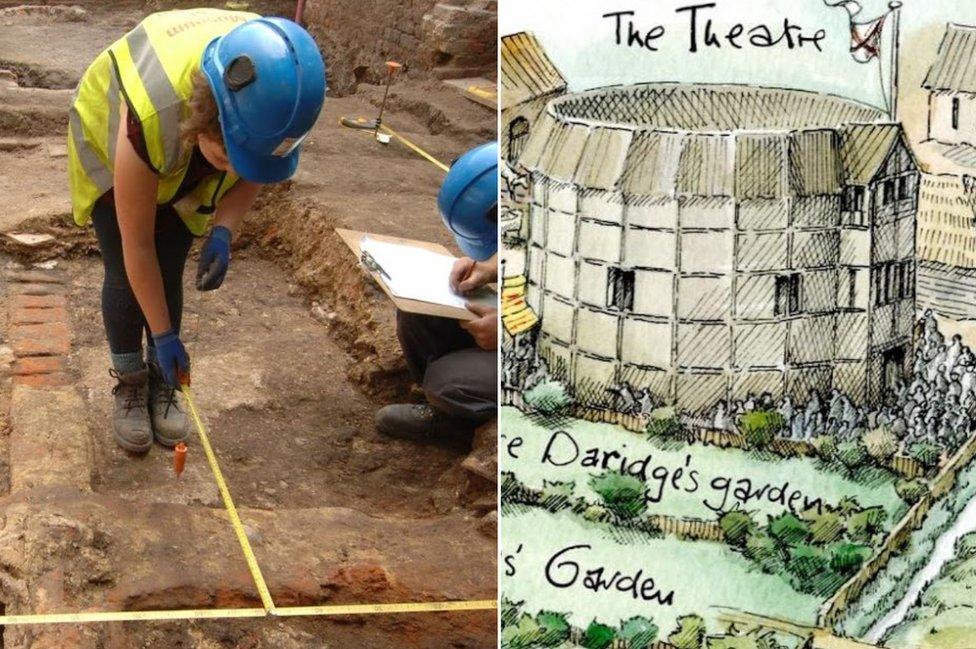
The Theatre is the earliest known example of a polygonal playhouse in London
The Theatre was built in 1576-7 and is thought to have been the first place to show William Shakespeare's tragedy Hamlet and Christopher Marlowe's Doctor Faustus.
A popular venue, a number of playing companies were associated with it, such as the Lord Chamberlain's Company that included Shakespeare as an actor.
The remains of The Theatre were formally protected in 2016 to coincide with the 400th anniversary of Shakespeare's death.
Hadrian's Wall Quarry, Carlisle, Cumbria
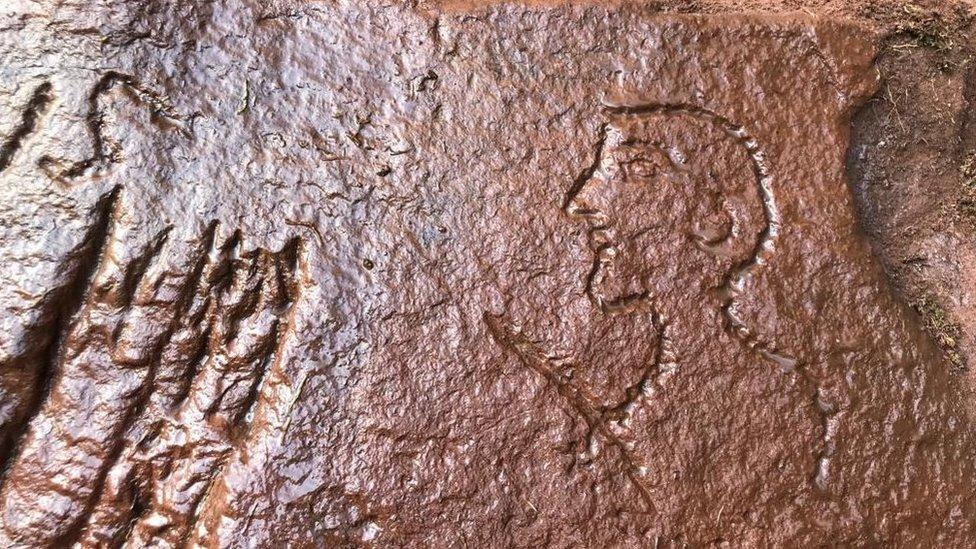
Roman graffiti in the quarry includes a caricature of a commanding officer
New Roman graffiti was discovered in the remains of a quarry near Hadrian's Wall at Gelt Woods in February 2019.
Known as The Written Rock of Gelt, the inscriptions were made by the Romans while they were repairing Hadrian's Wall in AD207.
It was thought they included a group of nine inscriptions, of which only six were legible, however more have been found including a caricature of the commanding officer in charge of the quarrying and another that proves the Romans were rebuilding their frontier in the early third century.
The graffiti were discovered during a project to record them before they were lost through erosion, work funded by Historic England and carried out by archaeologists from Newcastle University.
The London Shipwreck, Southend, Essex

Divers recovered a rare gun carriage from the wreck
The London accidentally blew up in 1665 and sank off Southend-on-Sea, where it lies in two parts on the sea bed.
Five years previously it had been part of the flotilla that brought Charles II back to Britain from the Netherlands to restore him to the throne.
It was excavated by Historic England, Cotswold Archaeology and licensed divers between 2014-15 to retrieve important artefacts before they could be lost forever through damaging currents and sea worms.
An array of items including musket balls, ingots and navigational tools were recovered.
An extremely rare and well-preserved wooden gun carriage was also brought to the surface - the only known example from this period in existence.
Mutilated corpses, Wharram Percy, North Yorkshire

Archaeologists found a number of burnt and mutilated bodies in Wharram Percy
The burnt and mutilated bodies discovered in the deserted village of Wharram Percy could be a sign of a medieval fear of the living dead, archaeologists said.
Medieval folklore held that the dead could rise from their graves, spreading disease and menacing the living.
In research published in 2017, experts from Historic England and the University of Southampton found many of the bones had knife-marks consistent with decapitation and dismembering.
There was also evidence of burning and the deliberate breaking of bones after death.
Britain's earliest rabbit, Sussex
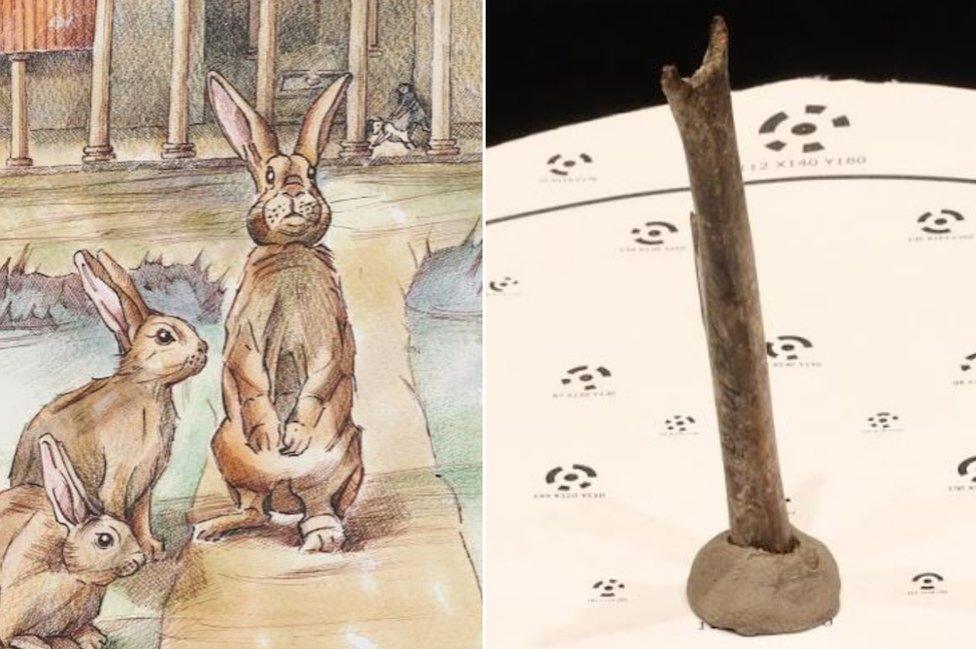
The small bone came from a rabbit that was probably a Roman resident's pet
A tiny rabbit bone found at Fishbourne Roman Palace in Sussex was confirmed to date from the first century AD, revealing the animals arrived in the country 1,000 years earlier than previously thought.
Rabbits are native to Spain and France and it had been thought they were a medieval introduction to Britain. The 4cm (1.6in) piece of tibia was discovered during excavations in 1964 but had been overlooked at the time.
In 2019, a Historic England zooarchaeologist recognised the bone belonged to a rabbit and verified this through genetic testing.
This animal may have been kept as an exotic pet with scientific analysis suggesting it was kept in confinement with no signs of butchery marks.
Anglo-Saxon Cemetery, Great Ryburgh, Norfolk
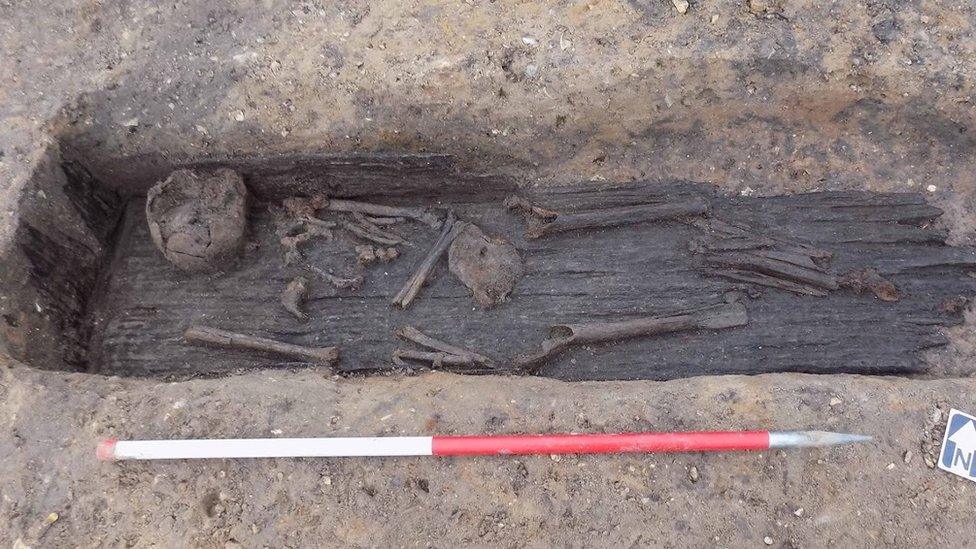
The site is believed to have been a Christian cemetery
In 2016, archaeologists uncovered an Anglo-Saxon cemetery containing 81 extremely rare wooden coffins that were preserved in the wet ground.
They were discovered during an excavation by the Museum of London Archaeology (MOLA) funded by Historic England, in advance of a new lake and flood defence system being built.
The waterlogged conditions of the river valley led to the preservation of the tree-trunk coffins as well as plank-lined graves that dated from the seventh and ninth centuries AD.
It was believed to have been a Christian cemetery "greatly adding to our understanding of early Christian Anglo-Saxon communities and their funeral practices", Historic England said.
Roman settlement, Scotch Corner, North Yorkshire
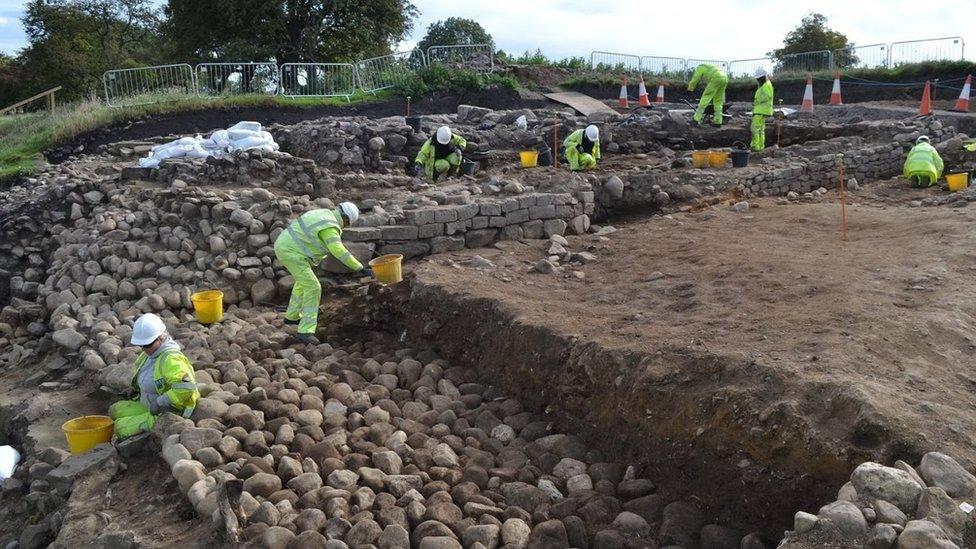
Roman remains were found as part of road improvement works to the A1
Discovered in 2017 as part of a road improvement scheme, archaeologists unearthed the remains of a major Roman settlement that pre-dated settlements in York and Carlisle by 10 years, showing the Romans probably expanded their occupation into Northern England earlier than previously thought.
The archaeological team also found a startling range of Roman objects during the investigations, from shoes and keys to a snake-shaped silver ring, rare amber figurine and the most northerly example of coin production ever found in Europe.
Greyfriars, Leicester
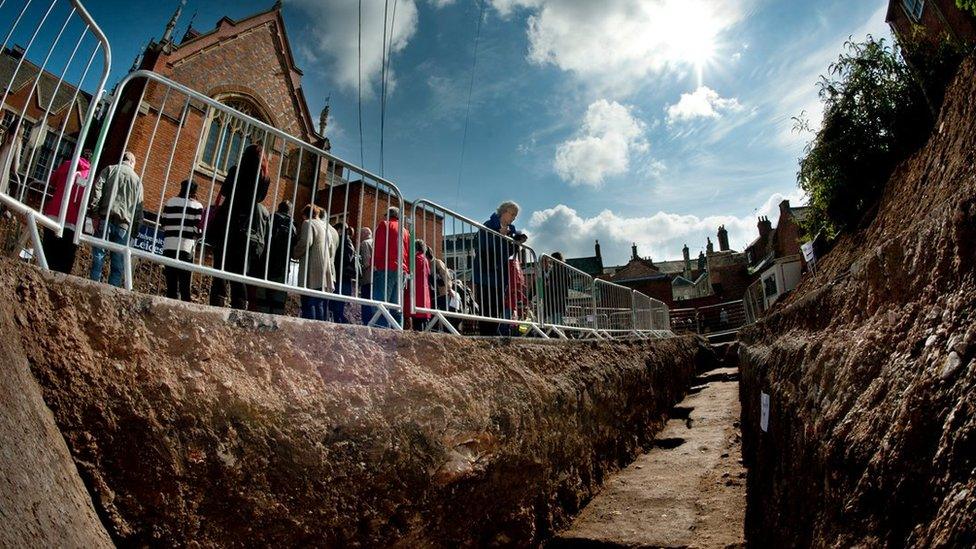
The remains of the medieval Greyfriars monastery were made a scheduled monument in 2017
Long known to be the site of a medieval monastery, in August 2012 the University of Leicester, the Richard III Society and Leicester City Council began an ambitious excavation to search for the grave of Richard III.
His remains were eventually discovered under a car park in the city centre and identified by DNA analysis of surviving descendants.
Further excavations revealed the extent of Greyfriars, the site where Richard III was buried after the Battle of Bosworth in 1485.
Greyfriars was an early 13th Century Franciscan friary which played an important role in medieval Leicester before its dissolution in 1538.
It was granted protection as a scheduled monument in December 2017.
Iron Age or Roman Settlement, Killington, Cumbria
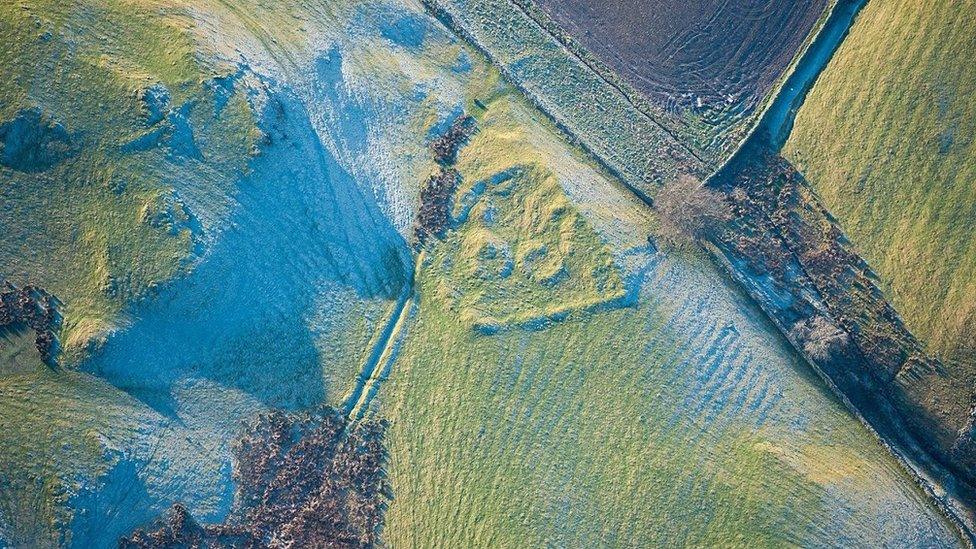
The remains of a Roman or Iron Age settlement were spotted from the air
This site at Gillsmere Sike was discovered by Historic England's aerial archaeology team in 2012, who photographed the late Iron Age or Roman settlement from a light aircraft.
Historic England's flying archaeologists identified two round houses, separated from the surrounding land by an embanked boundary with an entrance on the southern side, opening towards a stream.
The remains of medieval or post-medieval ploughing, known as ridge and furrow, appeared as undulating lines on the landscape and they show this area was in agricultural use for many years.
The hot dry summer of 2018 also led to many further archaeological discoveries from the air.
- Published20 December 2019
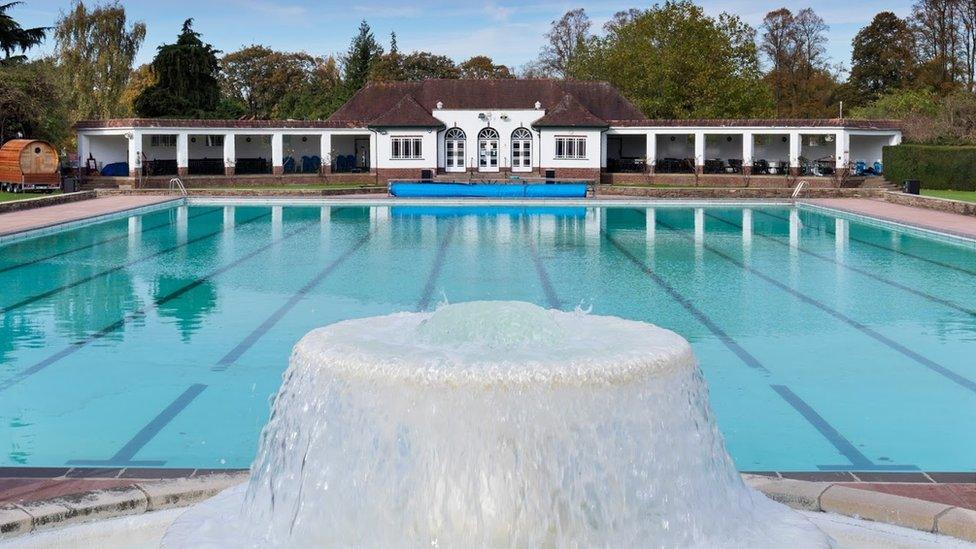
- Published24 September 2019
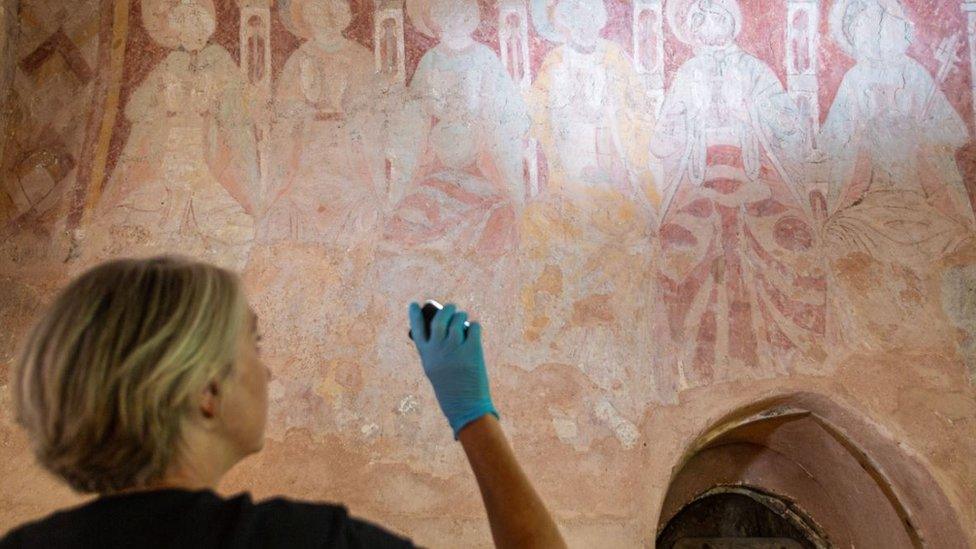
- Published11 April 2019
